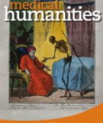Cooperation is more stable in large networks
A new model developed by researchers at Aarhus University predicts that networks can only support cooperation if they are big enough to do so.

At the Interacting Minds Centre at Aarhus University, Lars Bach and Kaare Mikkelsen are using computer simulations to explore conditions for cooperation and how altruistic, unselfish behaviour can be supported. They have just developed a model showing that cooperation can collapse if network neighbourhoods become too small.
“We were surprised by the results because standard theory predicts that small groups offer the best conditions for cooperation. But we can now show that the kind of cooperation that is found in large networks with more connections is more stable,” says Lars Bach
The deviations are interesting
The research done by Mikkelsen and Bach is based on the theory of evolution. Among other things, this theory predicts that people always try to optimise their own situation, so they do not normally exhibit unselfish behaviour.
“When human beings (and many other organisms, for that matter) do not behave according to the theory, it is interesting to look at the mechanisms that can explain the deviations. And that’s what we have done in this project. Our results show that the way we take part in a network will affect our behaviour. That’s why networks themselves have an impact on when we show altruistic behaviour,” explains Bach.
Computer-simulated interactions
The new model developed by Kaare Mikkelsen and Lars Bach is based on game theory. This approach uses computer simulations to analyse interactions between individuals as if they were games. In most game-theory studies the focus has been limited to pairwise interactions, but Mikkelsen and Bach have tried to reveal what actually happens in more complex networks.
“We were pretty convinced that studies limited to pairwise interactions ignore the more complex group dynamics such as synergy effects. We also wanted to include the effects arising from the network structure per se. Adopting this focus enabled us to discover that large well connected communities can support more cooperation than was previously known,” explains Lars Bach.
Lars Bach and Kaare Mikkelsen hope that their new model, which was recently presented in the scientific journal PLOS ONE, will contribute to future research.
“Our research may seem a bit abstract because we are dealing with purely theoretical predictions. But our project should be seen as basic research contributing to the theoretical foundation of future research. So I look forward to discussing the results with experimental sociologists and other researchers working with, for example, social media netwoks or work related networks. It would definitely be interesting to include human volunteers in a game-theory situation in which we could test our model,” concludes Lars Bach.
Facts
The model developed by Kaare Mikkelsen and Lars A. Bach is based on game theory, which is a branch of mathematics used to analyse and understand behaviour among social individuals such as human beings as if it was a kind of game.
The new model is based on interaction in a limited network. Bach and Mikkelsen have gained new knowledge by comparing classical game-theory models with the potential for full interaction with models which allow for the limitations that are implicit in a network.
The model is described in the article “Threshold games and cooperation on multiplayer graphs,” published in the journal PLOS ONE.
Contact
Lars A. Bach, assistant professor
Interacting Minds Centre, Aarhus University
Mail: lbach@cas.au.dk
Mobile: 31696690
Kaare Mikkelsen, research assistant
Department of Engineering, Aarhus University
Mail: mikkelsen.kaare@eng.au.dk



